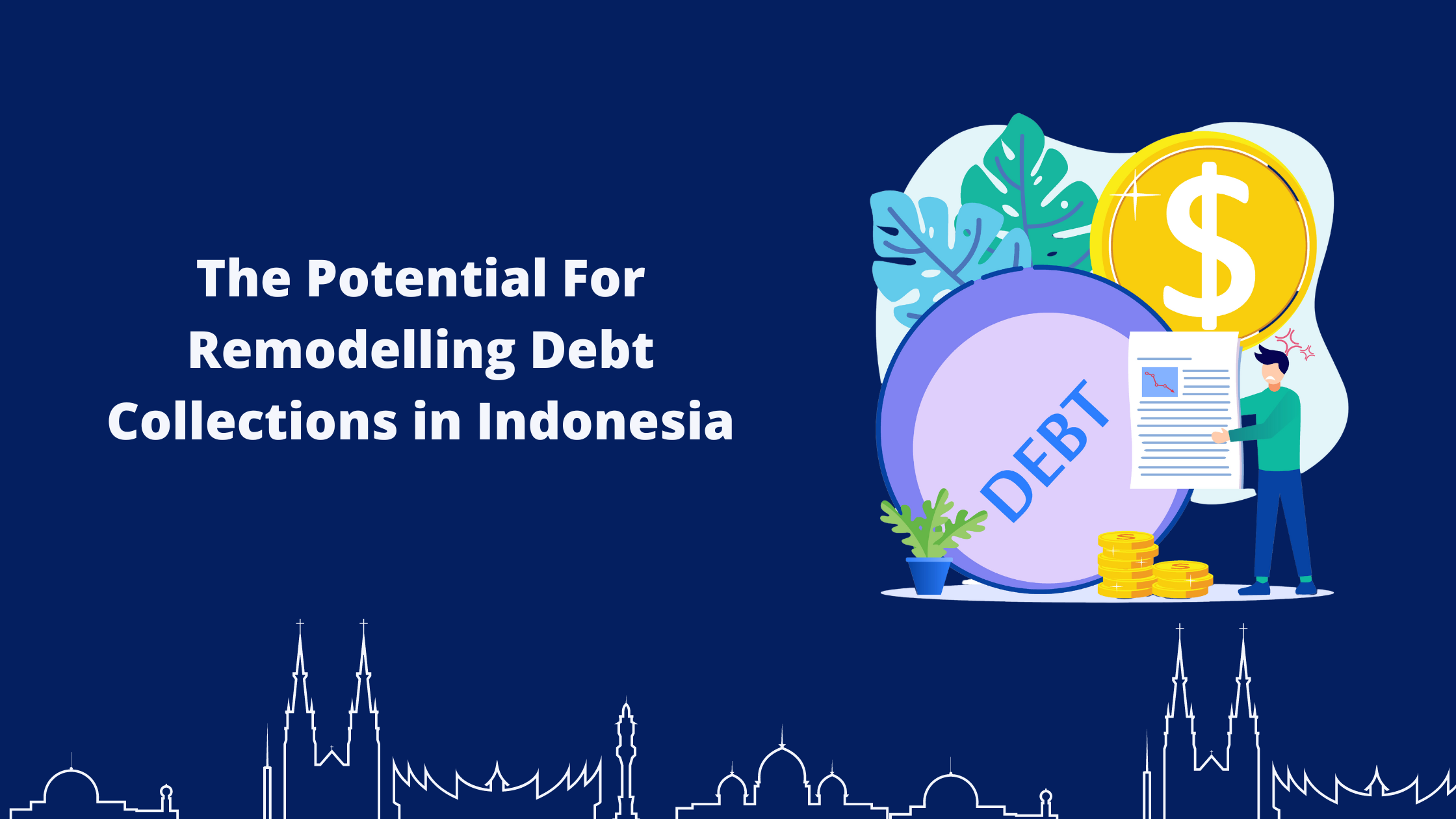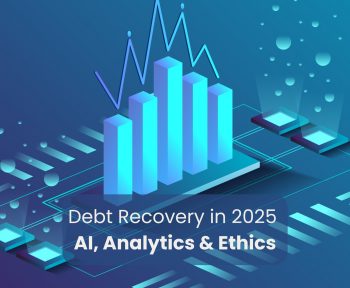Indonesia is working to establish itself as one of the top 10 economies in the world by 2045. A McKinsey reportⁱ¹ has predicted that approximately 90 million Indonesian citizens will join the consumer class by 2030 – a number higher than all emerging nations except China and India. In addition, government data indicates that Indonesia’s GDP is expected to grow by 5.2% in 2023². By 2030, Indonesia will be among the 15 countries with the largest GDP worldwide³, per a Goldman Sachs forecast. The Indonesian economy has seen an upward trend in spending power, rapid urbanization, and a greater shift toward internet use. As a result, many FinTech companies have solidified their place in the financial services sector, which is expected to grow at a 10.5% CAGR.
Rising Necessity for Modernization
Despite the overall promising financial growth, debt recoveries in Indonesia are grappling with stagnation, given the increase in loan volumes. The value of total loans⁴ saw a jump of 11.16% in November 2022 over the same month in 2021. And, much like their counterparts in India, banks and other financial institutions face issues of high non-performing loans (NPLs) and archaic, manually-driven collections processes.
The pandemic has aggravated the spike in the magnitude of NPLs. According to a 2018 Collection Complexity Score and Rating report by global credit insurance group Euler Hermes, Indonesia has been ranked seventh among countries where the challenge of collecting unpaid debts is categorized as “severe.”
Contributing to this peril are multiple challenges related to collections and debt recovery. A complicated regulatory landscape, laxity in the implementation of guidelines, the pressure of household financial vulnerability, ill-equipped or non-existent digital infrastructure to support modern debt collections, difficulty in tracking debtors, a lack of integrated collections strategies, and the limited role of the banking sector are some of the reasons the Indonesian economy is reeling under the pressure of distressed loans.
The Prevalent Challenges – A Foundation For Winning Strategies
Before delving into what kind of technology can be leveraged to transform the debt collections landscape, it is imperative to understand some of the issues inhibiting digital debt collections in Indonesia.
- Complex regulations:
The Euler Hermes report has suggested that payment practices, court proceedings, and other issues revolving around debt collections in Indonesia are incredibly complex and incompatible with prevailing western practices. However, in 2020, the courts in Indonesia called for the abandonment of unscrupulous collections tactics, urging lending institutions to respect the rights of the borrowers.
This fundamental change in the financial infrastructure of the Indonesian economy can become an impetus for digitization to widen its reach. The use of technology can supplement the creation of mechanisms that allow a systematic and scheduled outreach to loan holders. A customer-centric approach backed by data analytics can give lenders the desired capabilities to align better compliance with the existing regulatory infrastructure.
2. Inequity in household income:
Reports have confirmed a strong co-relation between financial system stability and household financial vulnerability. The October 2017 Financial Stability Review (FSR) of Bank Indonesia found that the absence of a strategic approach on the part of banks directly impacts household income and stability. As per report, the household sector recorded an average NPL increase of 1.50% per year.
Additionally, the decline in economic growth has further heightened the effects of income inequality. This vulnerability of the household sector, coupled with income inequity, naturally creates a necessity for borrowing. An increase in the number and magnitude of loans of all types calls for a comprehensive and highly functional collections mechanism. Adopting digital channels in such an ecosystem can help push the economy towards stabilization and give the population a sense of financial autonomy, which is currently lacking.
3.Ill-equipped or non-existent digital infrastructure:
In Indonesia, credit card penetration and adoption of online payments are low, making collections complicated for banks and fintech companies.
Machine learning and predictive analytics can be leveraged to have a robust and effective digital infrastructure for debt collections. Apart from expanding the digital infrastructure, these technologies can also bucket customers based on parameters such as risk-taking capacity, intent, and capacity to pay, etc., instead of aggressively chasing repayments through the manual methodology.
A country like Indonesia, where digital penetration is low, makes for the perfect opportunity to raise awareness about the safety of online transactions and the utilization of customer-friendly solutions among the general populace. However, developing a communications strategy that is personalized and in tune with the vernacular preferences of the public is imperative to accomplishing this goal. Disruption of technology in this area can hasten the outcome while also ensuring a better turnaround.
4. Tracking debtors:
Many financial institutions in Indonesia continue to rely on physical forms of identification, which becomes problematic for the collections teams. Tracking debtors becomes difficult and complicates skip tracing (i.e., locating the debtor who has moved between addresses). However, things are slowly changing after ID cards were standardized in Indonesia.
The benefit of digitization can help clear many of these blockages since artificial intelligence and data analytics can help lending institutions pull out accurate data of borrowers, including past payment patterns, the propensity to pay, and other psychological factors that contribute to the rise in defaulting borrowers. Furthermore, field collection agents can be empowered with digital operations to the last mile, improving agent performance while reducing the cost incurred in maintaining field operations. Innovations like smart route mapping, field force tracking, and visit management can transform the seemingly lengthy and uncertain exercise of tracking borrowers.
5. Opportunities for financial inclusion and a customized strategy
Banks and fintechs need to factor in the cultural sensitivities of their customer base and their region of operation. The need of the hour is a customized offering that respects its customers and the region’s unique cultural sensibilities. This necessity is further aggravated by the overall lack of financial inclusion in the Indonesian economy. According to the World Economic Forum, Indonesia has the world’s third-largest unbanked population and a financial literacy index as low as 40%. These and other demographic challenges are strongly linked to the larger issue of financial inclusion.
Digital financial services present an opportunity for lenders to work in cohesion with local governments to solve the problems arising from a lack of financial inclusion, setting up a solid foundation for sustainable economic growth. This transformation can help create a reliable ecosystem wherein the Indonesian populace and financial service providers can grow and achieve a well-built economic infrastructure.
The onus is now on financial service providers to reverse the current trend by undertaking the onerous task of massively expanding digital processes and capabilities. Not only will this help bring in much-needed predictability and visibility in collections, but it will also help identify defaulters early on, allowing financial institutions to customize their collection strategies based on the category of customers.
Given that the future of collections is digital and data-driven, Credgenics, a pioneer in technology-based debt collections, is facilitating digital transformation of the Indonesian debt collections landscape. Credgenics is already working with some of the leading lenders in the country and is adding new capabilities as per the business needs of lenders. The AI-powered SaaS-based debt collections platform digitizes end-to-end loan collections, offers agility, scalability, efficiencies, and maximizes the potential of an automated omni-channel approach – thereby becoming a game-changer for the Indonesian lending landscape.
References
- Mckinsey Report
- Ernst & Young Report
- Statista Report: GDP in Indonesia
- Trading Economics: Indonesia loan growth





